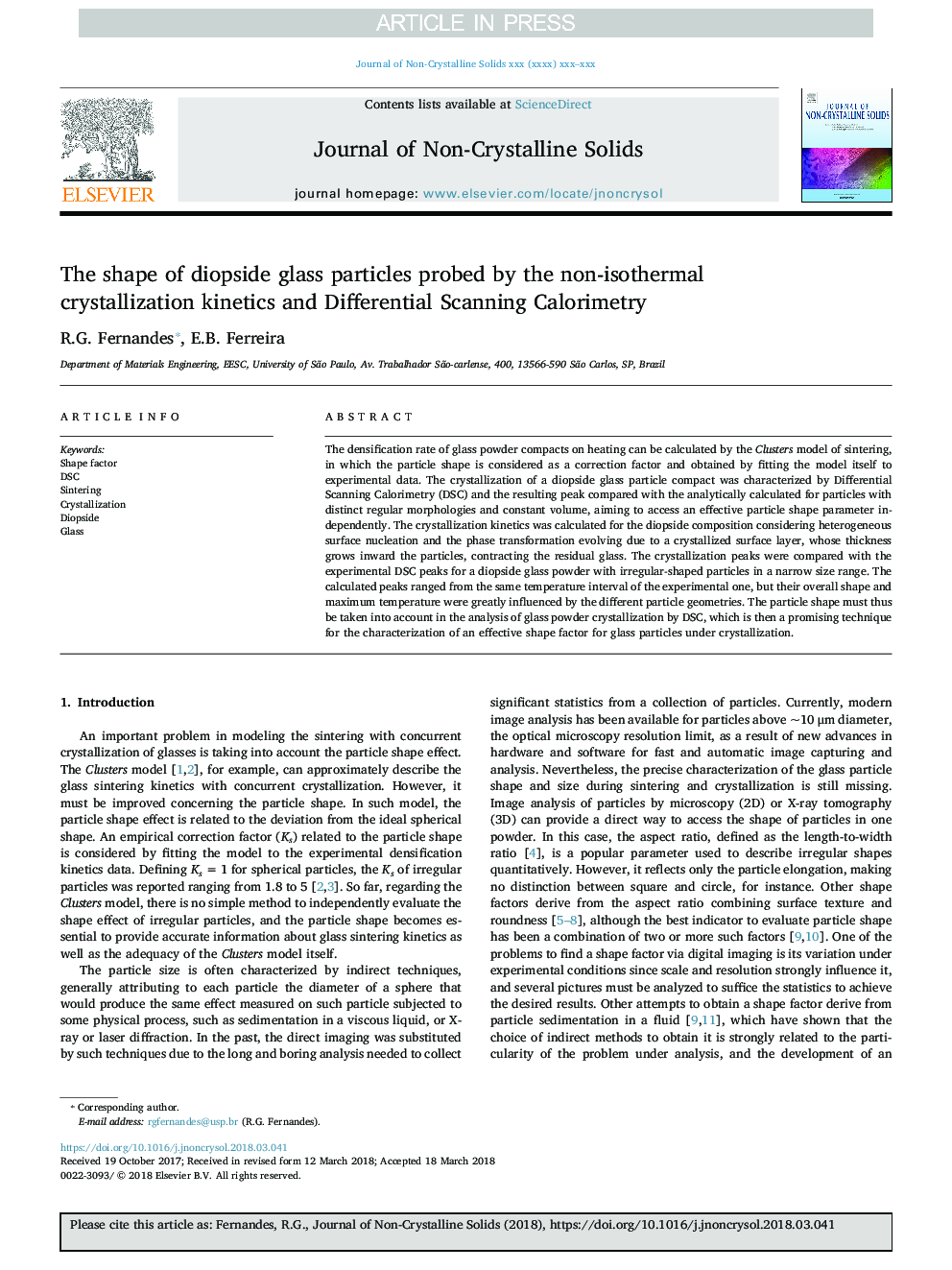| Article ID | Journal | Published Year | Pages | File Type |
|---|---|---|---|---|
| 7899606 | Journal of Non-Crystalline Solids | 2018 | 8 Pages |
Abstract
The densification rate of glass powder compacts on heating can be calculated by the Clusters model of sintering, in which the particle shape is considered as a correction factor and obtained by fitting the model itself to experimental data. The crystallization of a diopside glass particle compact was characterized by Differential Scanning Calorimetry (DSC) and the resulting peak compared with the analytically calculated for particles with distinct regular morphologies and constant volume, aiming to access an effective particle shape parameter independently. The crystallization kinetics was calculated for the diopside composition considering heterogeneous surface nucleation and the phase transformation evolving due to a crystallized surface layer, whose thickness grows inward the particles, contracting the residual glass. The crystallization peaks were compared with the experimental DSC peaks for a diopside glass powder with irregular-shaped particles in a narrow size range. The calculated peaks ranged from the same temperature interval of the experimental one, but their overall shape and maximum temperature were greatly influenced by the different particle geometries. The particle shape must thus be taken into account in the analysis of glass powder crystallization by DSC, which is then a promising technique for the characterization of an effective shape factor for glass particles under crystallization.
Related Topics
Physical Sciences and Engineering
Materials Science
Ceramics and Composites
Authors
R.G. Fernandes, E.B. Ferreira,
